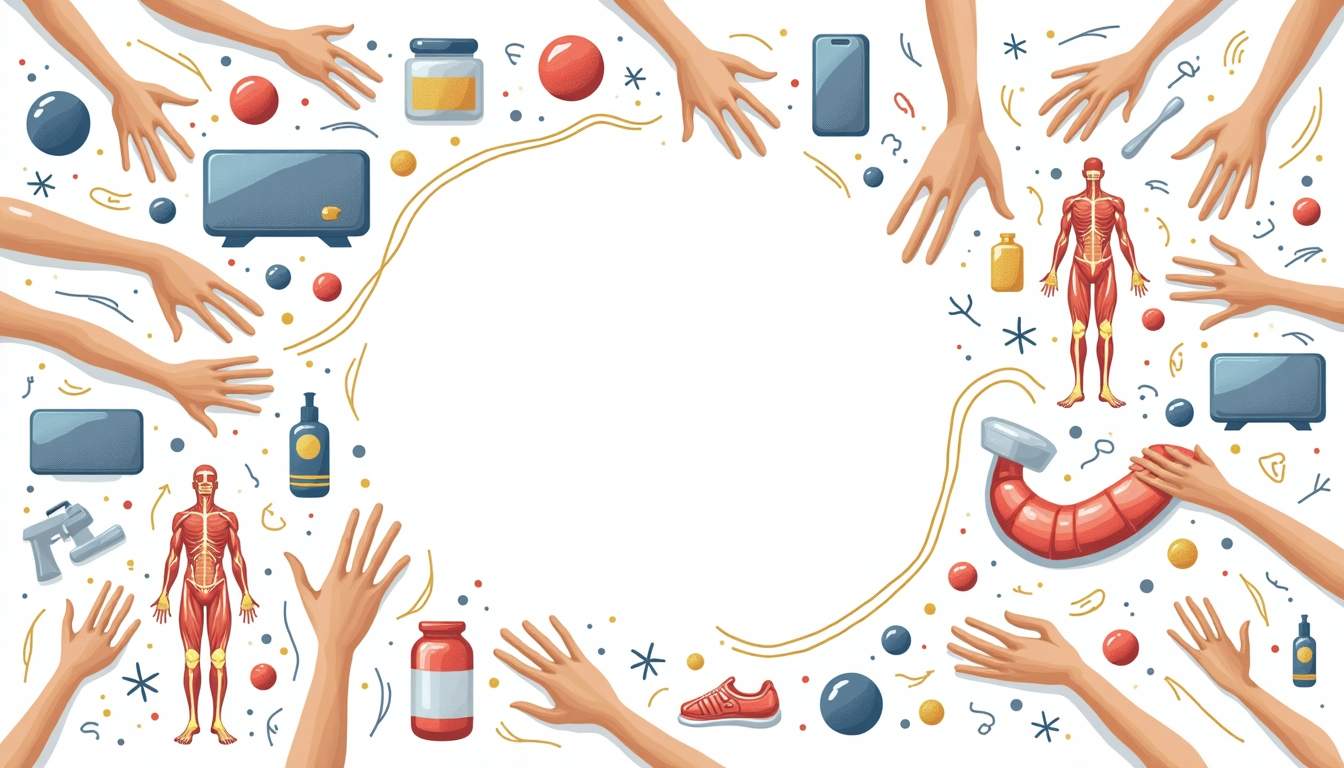Imagine finishing a grueling workout or a competitive game, your muscles screaming and your body begging for relief. Instead of collapsing onto the couch and calling it a day, you decide to take a more proactive approach-one that helps your body heal, restore, and come back stronger. That’s where active recovery steps in, blending sports massage, chiropractic care, and targeted rehabilitation to keep athletes performing at their best.
What Exactly Is Active Recovery?
Active recovery isn’t just about resting. It’s about moving in a way that promotes healing without adding strain. Think of it as giving your body the tools it needs to bounce back faster. This approach includes light exercises, mobility work, and therapies designed to reduce muscle soreness, improve circulation, and prevent injury.
For athletes, active recovery is a game-changer. It helps maintain flexibility, reduces stiffness, and keeps the blood flowing to muscles that have been pushed to their limits. Instead of passive rest, where the body stays still, active recovery encourages gentle movement and therapeutic interventions that accelerate repair.
Incorporating activities such as walking, cycling at a leisurely pace, or engaging in yoga can significantly enhance the recovery process. These activities stimulate the lymphatic system, which plays a crucial role in flushing out toxins and metabolic waste that accumulate during intense workouts. Moreover, practices like foam rolling and stretching can alleviate tightness and improve overall range of motion, making it easier for athletes to return to their peak performance levels.
Active recovery is not limited to physical activities; it also encompasses mental recovery strategies. Techniques such as mindfulness and meditation can help athletes manage stress and anxiety, which often accompany rigorous training regimens. By integrating both physical and mental recovery practices, athletes can achieve a more holistic approach to their recovery, ensuring that they are not only physically prepared for their next challenge but also mentally focused and resilient. For professional support and tailored recovery solutions, you can visit Advanced Pain Relief Clinic MK.
The Role of Sports Massage in Recovery
Loosening Up Tight Muscles
After intense training sessions, muscles often become tight and knotted. Sports massage targets these problem areas, applying pressure and techniques that break down adhesions and promote muscle relaxation. This not only eases discomfort but also improves range of motion, making it easier to move freely during subsequent workouts.

By stimulating blood flow, sports massage helps flush out metabolic waste products like lactic acid, which can build up during exercise and contribute to soreness. Enhanced circulation also delivers oxygen and nutrients to muscle tissues, speeding up the healing process. Furthermore, the rhythmic nature of the massage can trigger the release of endorphins, the body’s natural painkillers, which can further alleviate discomfort and enhance the feeling of well-being after a rigorous training session.
Preventing Injuries Before They Happen
Regular sports massage can catch small issues before they turn into major injuries. Tight muscles, imbalances, and scar tissue can all be addressed early, reducing the risk of strains or tears. For athletes who train hard and often, this preventative care is invaluable. Additionally, the therapist can provide valuable feedback on muscle tension and areas that may require more attention, allowing athletes to adjust their training regimens accordingly. This proactive approach not only helps in maintaining peak performance but also fosters a deeper understanding of one’s own body mechanics.
Boosting Mental Recovery
Sports massage isn’t just physical; it’s mental too. The calming effect of massage reduces stress hormones and promotes relaxation. This mental reset can improve sleep quality and overall mood, both of which are critical for optimal athletic performance. Moreover, the tactile stimulation of massage can enhance the mind-body connection, allowing athletes to become more attuned to their physical state. This heightened awareness can lead to better focus during training and competition, as well as a greater ability to manage stress and anxiety related to performance pressures.
Chiropractic Care: Aligning for Peak Performance
Why Spinal Health Matters
The spine is the central support structure of the body. Even minor misalignments can throw off posture, movement patterns, and nerve function. Chiropractors specialize in detecting and correcting these misalignments, known as subluxations, to restore balance. A well-aligned spine not only supports physical health but also contributes to mental well-being. Research suggests that spinal health is linked to the body’s overall ability to manage stress and maintain emotional balance, which is essential for athletes facing the pressures of competition.

For athletes, spinal health is crucial. Proper alignment ensures that muscles work efficiently, joints move smoothly, and the nervous system communicates effectively. This can translate to better coordination, strength, and reduced injury risk. Furthermore, a healthy spine can enhance an athlete’s endurance and stamina, allowing them to perform at their best for longer periods. Many athletes report feeling more energized and focused after chiropractic adjustments, attributing their improved performance to the enhanced flow of energy throughout their bodies.
Beyond the Spine: Addressing Joint and Soft Tissue Issues
Chiropractic care isn’t limited to the back. Many practitioners also work on extremities like shoulders, hips, knees, and ankles. Adjustments and mobilizations can relieve joint restrictions and improve mobility, which is vital for athletes who rely on precise and powerful movements. Additionally, soft tissue therapies such as myofascial release and trigger point therapy are often integrated into chiropractic sessions. These techniques target muscle tightness and tension, further enhancing an athlete’s range of motion and overall performance.
Moreover, addressing soft tissue issues can prevent the development of chronic pain conditions. Athletes who experience tightness or discomfort in their muscles may unknowingly alter their movement patterns, leading to compensatory injuries. By focusing on both joint and soft tissue health, chiropractors help athletes maintain optimal performance while minimizing the risk of injury. This holistic approach ensures that athletes not only recover from injuries but also enhance their physical capabilities, leading to improved outcomes in their respective sports.
Enhancing Recovery and Reducing Pain
After intense physical activity, inflammation and soreness can linger. Chiropractic treatments can help reduce this discomfort by improving joint function and promoting natural healing processes. Many athletes find that regular chiropractic sessions speed up their recovery timelines. Techniques such as spinal decompression and electrical stimulation may also be employed to alleviate pain and expedite healing, allowing athletes to return to their training regimens sooner.
In addition to physical adjustments, chiropractors often provide athletes with personalized rehabilitation exercises and stretches to perform at home. These tailored programs are designed to strengthen vulnerable areas, enhance flexibility, and improve overall athletic performance. By incorporating these exercises into their routines, athletes can take a proactive approach to their health, ensuring that they remain in peak condition throughout their training and competition seasons. This comprehensive strategy not only addresses immediate pain but also fosters long-term resilience and durability in the face of physical challenges.
Rehabilitation: Rebuilding Strength and Function
Targeted Rehab for Specific Injuries
Injuries are an unfortunate part of sports, but rehabilitation offers a path back to full function. Rehab programs are tailored to the injury and the athlete’s goals, focusing on restoring strength, flexibility, and coordination.

Whether it’s a torn ligament, a strained muscle, or a joint injury, rehab exercises are designed to rebuild the affected area safely. This gradual progression helps prevent re-injury and ensures the athlete can return to their sport with confidence.
Functional Movement and Performance Enhancement
Rehab isn’t just about healing; it’s about improving. Many rehab specialists incorporate functional movement training to correct imbalances and optimize biomechanics. This approach helps athletes move more efficiently, reducing wear and tear on the body over time.
By focusing on movement quality, rehab can also enhance athletic performance. Stronger, more stable muscles and joints contribute to better power output, agility, and endurance.
Integrating Rehab with Other Recovery Modalities
Rehab works best when combined with other recovery strategies like sports massage and chiropractic care. This integrated approach addresses multiple facets of recovery-from tissue healing and pain relief to alignment and movement patterns-giving athletes a comprehensive path to wellness.
Putting It All Together: Designing an Active Recovery Routine
Listen to Your Body
Active recovery starts with awareness. Pay attention to how your body feels after workouts and competitions. Soreness, tightness, or stiffness are signals that some form of recovery work is needed.
Schedule Regular Sessions
Incorporate sports massage and chiropractic care into your routine on a regular basis, not just when pain strikes. Consistency helps maintain muscle health and joint alignment, preventing issues before they arise.
Customize Your Rehab
If you’re dealing with an injury or chronic problem, work with a rehab specialist to develop a personalized plan. Follow through with exercises and adjustments, and communicate openly about your progress and any setbacks.
Combine Movement with Rest
Active recovery isn’t about pushing harder. It’s about moving smarter. Gentle stretching, light aerobic activity, and mobility drills can be powerful tools when balanced with adequate rest and sleep.
Benefits Beyond the Physical
Active recovery methods like sports massage, chiropractic care, and rehab don’t just fix physical issues-they improve mental resilience too. The sense of taking control over recovery can boost confidence and motivation. Plus, the relaxation and pain relief help reduce anxiety and stress, creating a healthier mindset for training and competition.
For athletes, recovery is just as important as training. Investing time and effort into active recovery pays dividends in performance, injury prevention, and overall well-being. It’s a smart strategy that turns soreness and fatigue into strength and readiness.